
It has happened to most tomato gardeners.
Putting young tomato plants out a squeak too soon or getting caught in a cold snap in the greenhouse. No one controls the weather.
The frost-free dates for any given area are an estimation based on historical data. Its no secret that the weather is changing. There is no shame in being optimistic!
Tomatoes are Resilient!
Even though tomatoes are heat loving and cold intolerant, they are tougher than you think. Don’t despair. There may be hope for your frost-bitten plants.
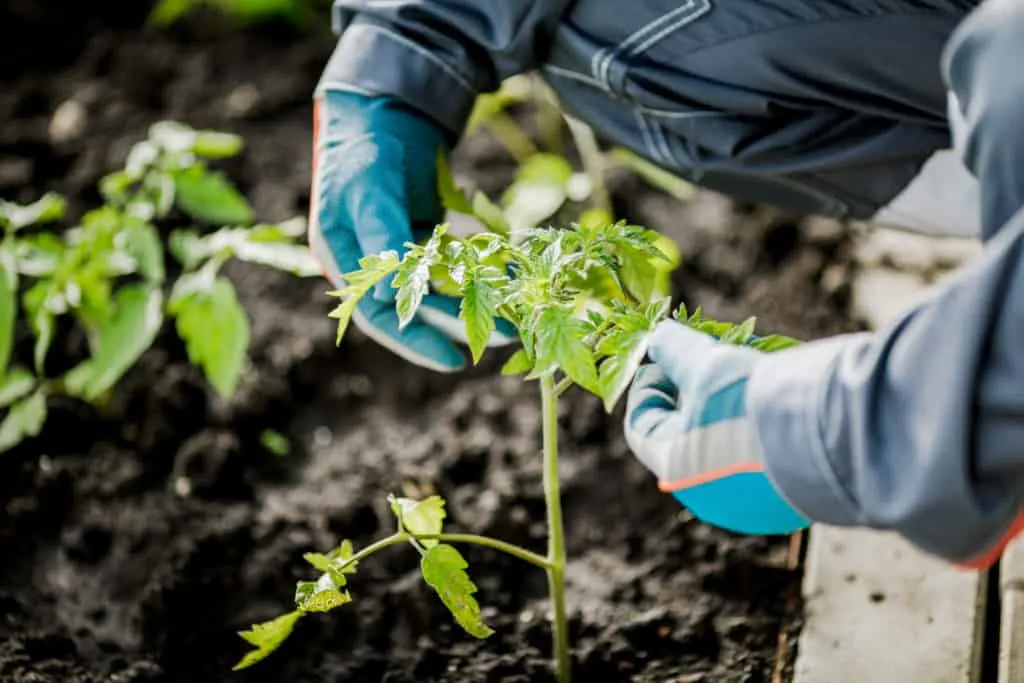
3 Signs Of Frost Damage In Young Tomato Plants
Give it a few hours. Try not to touch any damaged parts until the frost is over. Inspect the plant parts.
1. Your tomato plants are wilting.

2. The leaves have soft damage between the veins and on the leaf margins.
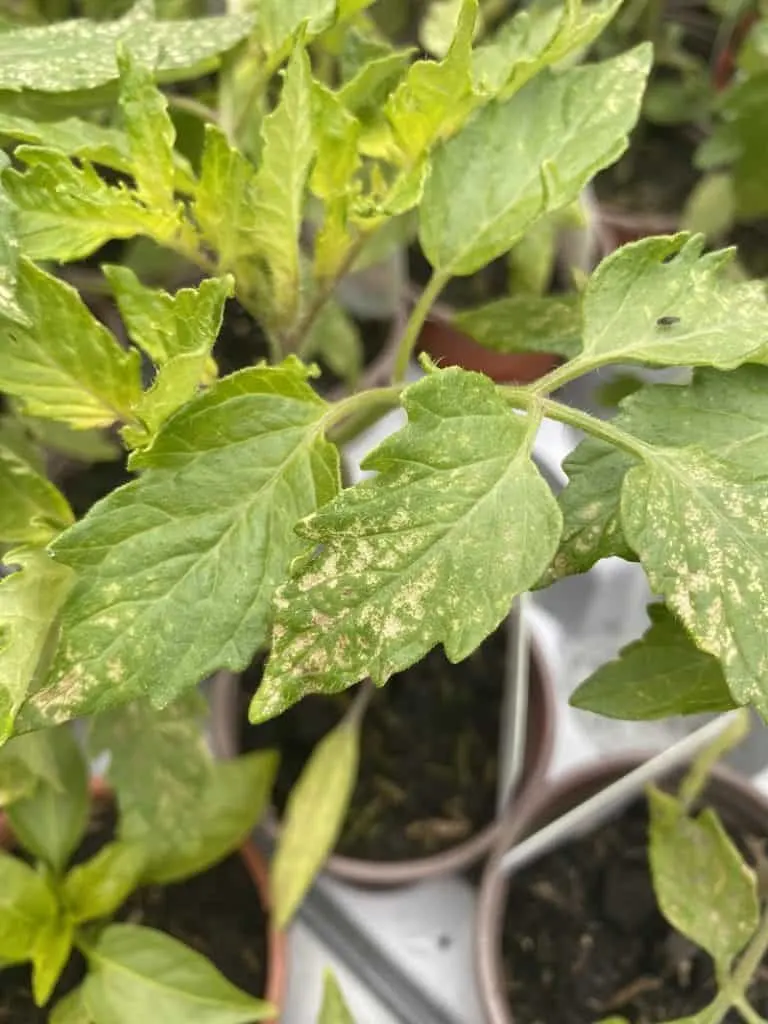
Allow any damaged plant parts to remain on the plant and fall off naturally. It may be surprising how much of the plant is able to fully recover.
3. Damage to the stem
Damage to the stem is evidence of severe frost damage that is difficult to come back from. The lower the frost damage on the stem, the less likely a full recovery is in the tomato plant’s future. If the stem is damaged below its lowest leaves, there is little to no hope for recovery. At this stage, it is best to find replacement plants. It may be too late to start from seed. Hopefully, the garden center will still have a reasonable selection. Or another friendly tomato grower has started too many plants and is willing to share!
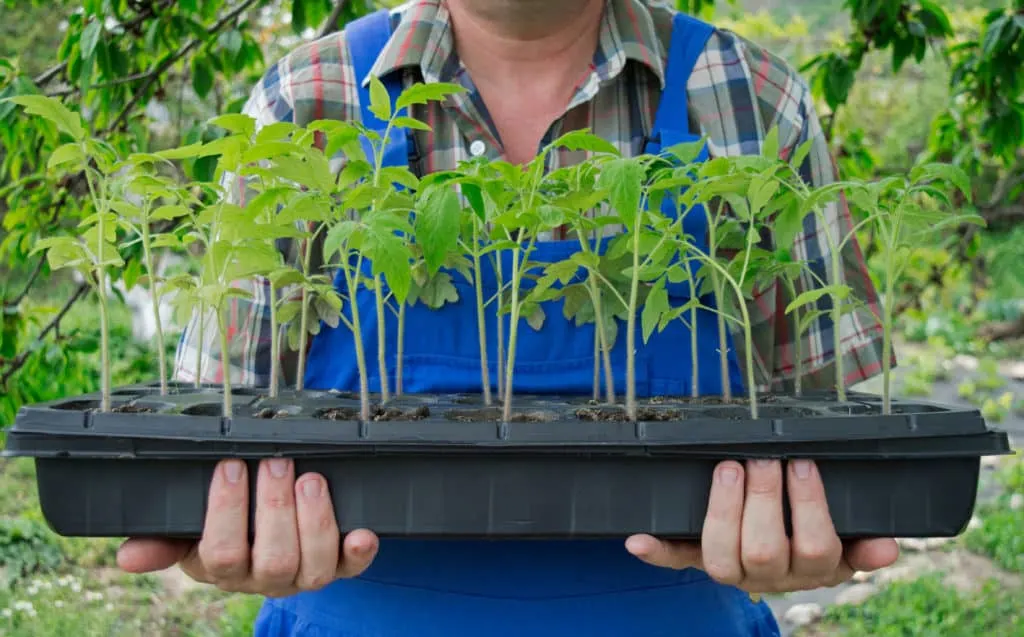
How To protect Young Tomato Plants From Frost Damage
Protecting plants from future potential frosts can be accomplished by draping an old bedsheet, some row-cover material, or greenhouse plastic over the plants. Use stakes to prop the covering up so it doesn’t touch the plants.
If the plants are still small enough, use boxes, or jugs with the bottoms removed over the plants as protection. Anything you use should be removed during the day to allow the plants exposure to the sun’s warmth as well as excellent air circulation.
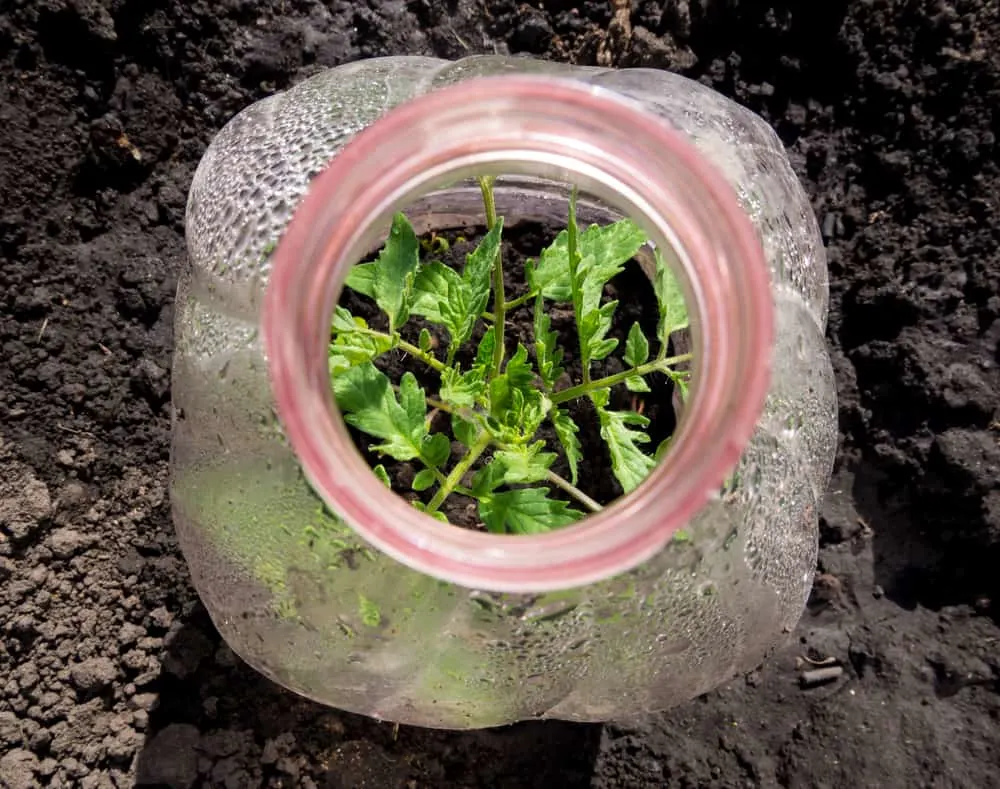
How To Get Frost Damaged Tomato Plants To Bounce Back
Helping your plants survive and thrive after exposure to frost can be accomplished in several ways.
These are great tips to do anyway when transplanting young tomato plants. If young tomato plants have suffered some frost damage, try including these couple of steps to help them bounce back even faster.
High-Quality Soil & Food
Once tomatoes are past the seedling stage, include some potassium in their soil or feed at transplanting time. A couple handfuls of fine wood ashes over a row of tomatoes is enough to encourage strong, rigorous growth. If you are using a commercial fertilizer, potassium is the K of the NPK, (nitrogen, phosphorus, and potassium) which represents the macronutrients required by most plants. In organic fertilizers, these numbers do not need to be high, but do watch that the third number (K) is not zero.
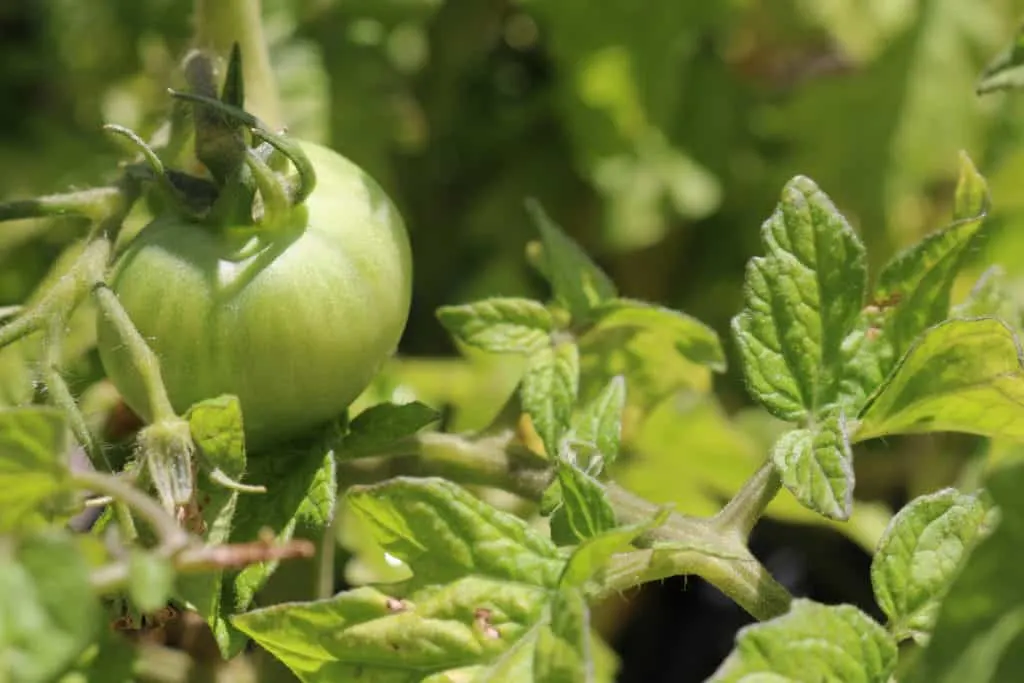
Hardening Off
Ensuring your young tomato plants are hardened off may protect them somewhat in the face of challenging temperature situations such as frost. A plant straight from the warm and cozy windowsill sent outside for the first time will be more susceptible and show more damage than a hardened off plant.
To harden off tomato plants, bring them outside into a sheltered spot a week before planting out. Leave outside for an hour, then bring back in to the warmth and shelter of inside. Each day increase the time outside a little until by the end of the week they are spending all day outside and ready to be planted out.
Weird Weather
Nothing is perfect, certainly not the weather. Throughout the growing season, pay close attention to changes in weather that might affect your growing tomato plants.
Where I live, a snowstorm in July is not completely unheard of. Watch out for drastically dipping temperatures, wind warnings, and other out-of-the ordinary weather conditions. Be prepared to provide appropriate protection for your little gorgeous growers if possible.
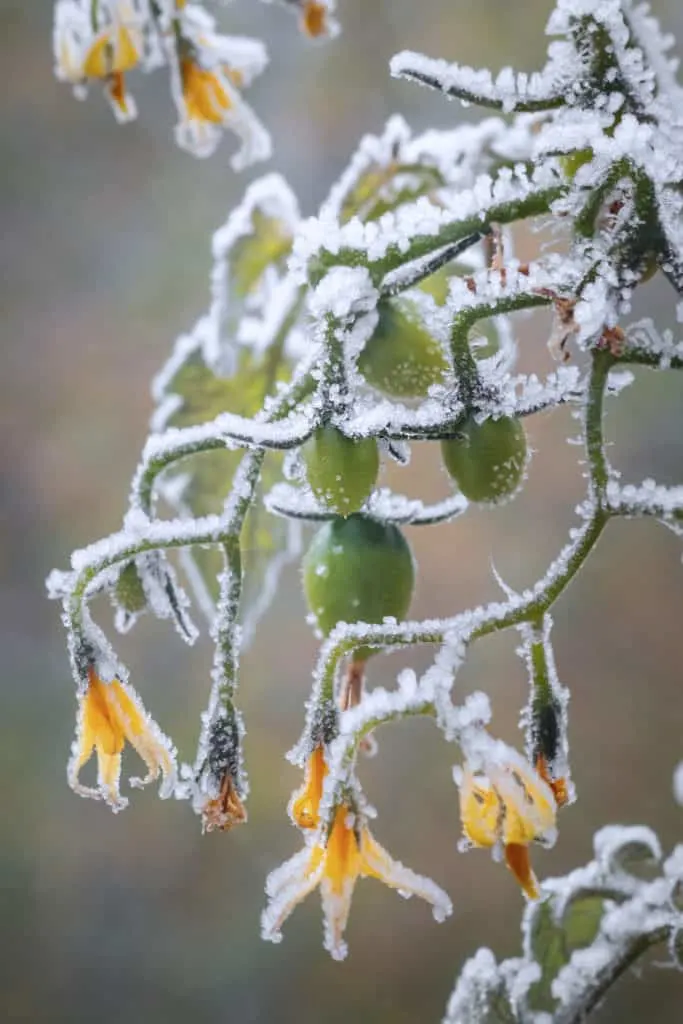
End of Season Frosts
At the end of the season, the tomato plants are going strong and you’re bringing in bushels of delicious, ripe tomatoes every day. Success!
The first frost date is nearing, but the weather is so perfect. It is easy to let your guard down. Whether the tomatoes are ripe and juicy, just beginning to blush, or deep, vibrant green, they will lose so much in flavor and texture if they are left out in the cold.
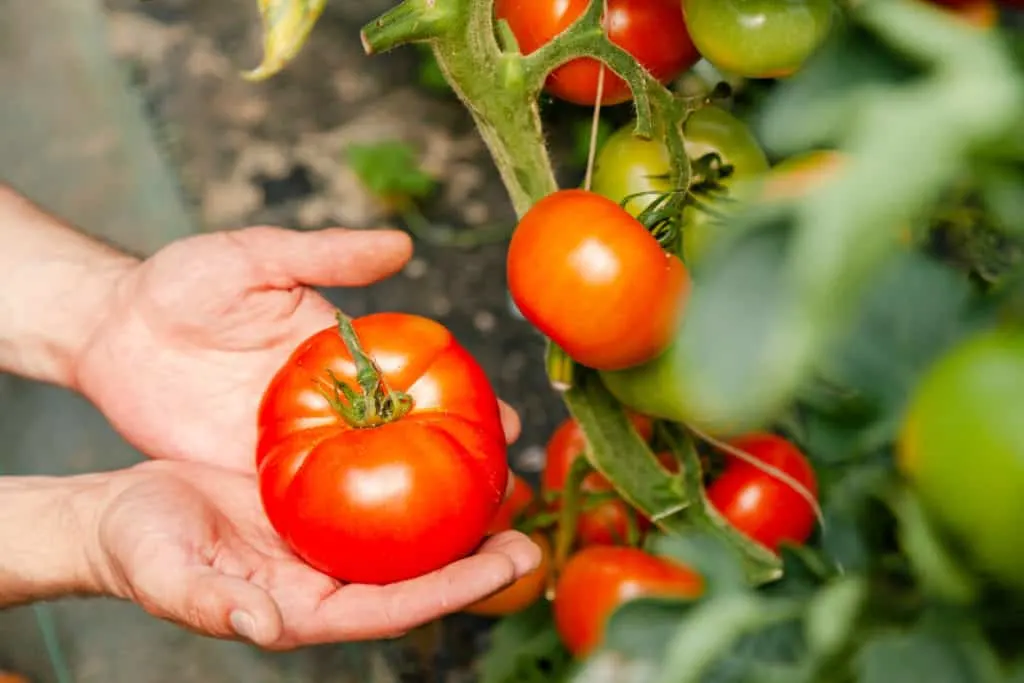
Better to Pick Early Than Too Late
It may be better to err on the side of caution and pick them early, bring them inside to let them ripen rather than lose them to a hard frost.
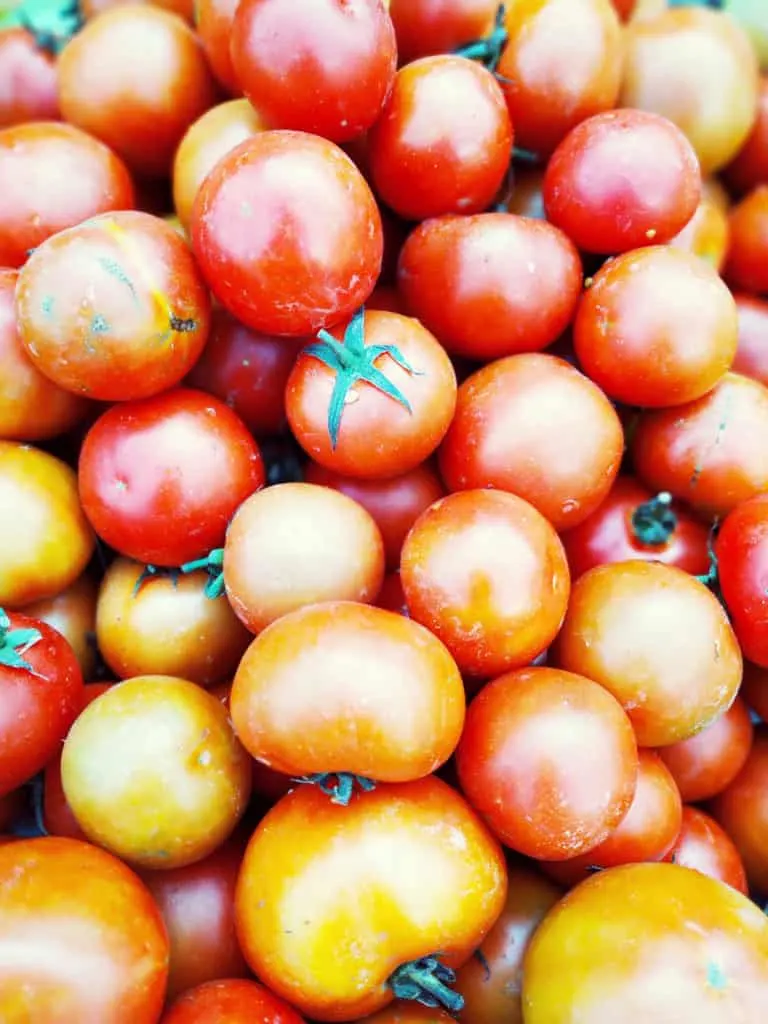
What to Do With Frost Damaged Tomatoes
If you do get caught by an early frost, the tomato plants themselves may be fine for a while yet. The fruit may not be so lucky. It is best to harvest any damaged tomatoes. This will keep them from becoming rotten or festering any disease in the garden.
Use frost-damaged tomatoes quickly as they will not be your prime ingredients for canning or drying. They may be perfect for a fresh salsa, roasted tomato soup, or to throw in your favorite coconut curry. Basically, anything you’ll eat right away.

Frost Damage Is Not the End of Your Tomato Adventure
Tomato plants are surprisingly resilient. Depending on the extent of the frost damage, your young toms may come back even stronger!
If they are beyond recovery, replace them and know, you are not the first gardener to lose a plant or two to the weather. Great gardeners have learned hard lessons. If this is yours, congratulations! You’re on your way to becoming a great gardener too!
